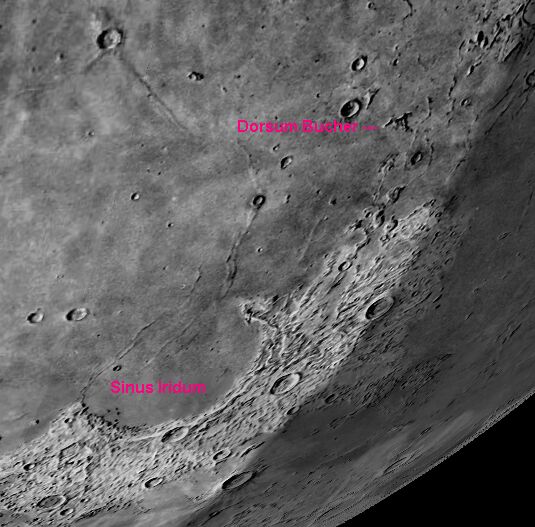Gail and I took advantage of the lull in the wind, Friday night, to do some moongrazing with our new William Optics binoviewers. I say ?moongrazing? because we were able to bump the power up to 210x which gave us a view relative to being just 1067.5 miles (1718km) above the lunar surface. When you are able to use both eyes on such a bright target, that close, you really feel you are in close orbit.
Much detail was apparent in the way of shadow peaks, craterlets, cliff walls, domes, and wrinkle ridges known as Dorsums. A feature that especially caught my eye was Dorsum Bucher. At low power (75x), it appeared as a small triangular formation with a couple of tiny projections off one side that made it look like a spacecraft. Higher power revealed the bumpy ridges that made up the boundaries.
In the attached graphic from the Virtual Moon software, you can locate Dorsum Bucher just up and right (Newtonian view) of the large bay Sinus Iridum, which is Latin for Bay of Rainbows. Luckily, my optics were better than those who gave the bay its name and no chromatic ?rainbows? were seen. 🙂
If you don?t have a copy of Virtual Moon on your computer, you can download it for free from: http://www.astrosurf.com/avl/UK_index.html

